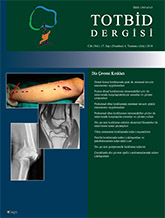
The structure of pediatric knee region is mostly cartilaginous. Since the resistance of cartilage to traumatic forces is weaker than the ligaments and tendons, pediatric knee injuries generally occur as growth plate injuries and rupture fractures. The most common are epiphyseal and avulsion fractures which are distal femur and proximal tibial epiphyseal injuries, osteochondral knee fractures, fractures of patella, tibial eminentia and tibial tubercule fractures. One should suspect an osteochondral fracture if the knee of a child becomes swollen with limited and painful weight bearing after the injury. Most of the injuries are diagnosed with plain radiographs but MR is gold standard for visualizing the occult injuries and osteochondral fractures. These fractures require accurate reduction and stable fixation with minimal invasive methods to minimize the growth disturbance and articular dysfunction. K wires and screws are commonly used implants for fixation. Neurovascular injuries and compartment syndrome are early complications while joint stiffness, growth disturbances and joint laxity can be diagnosed as a late complications.